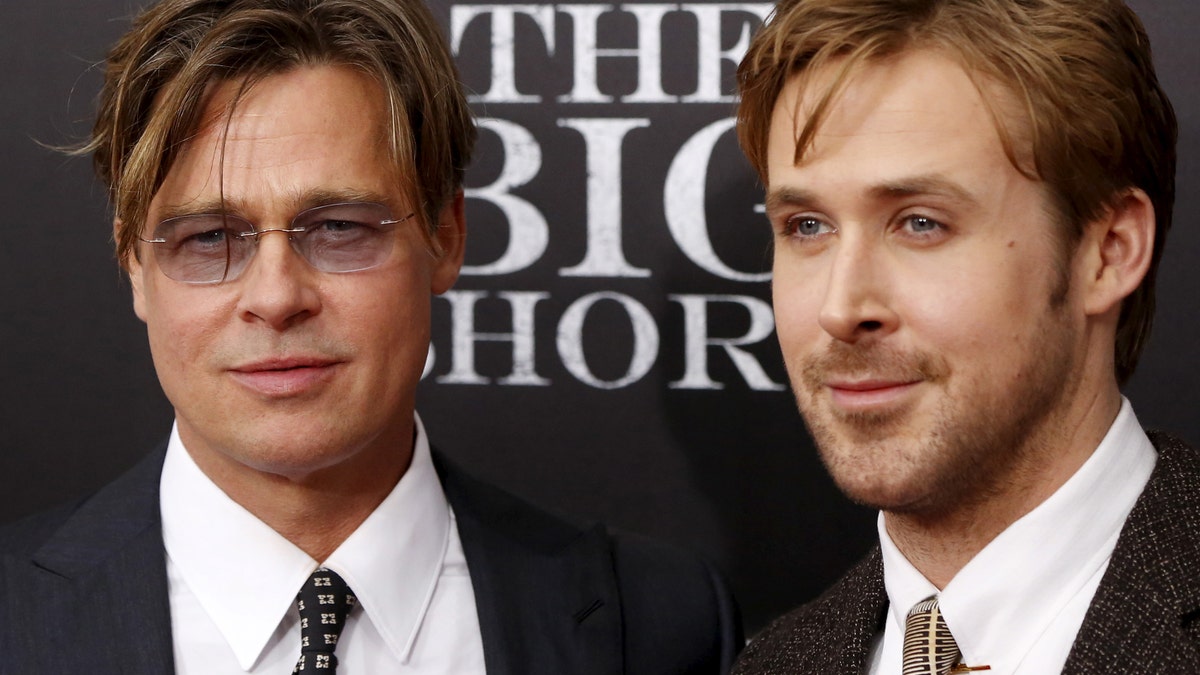
Cast members Brad Pitt and Ryan Gosling pose on the red carpet at the premiere of "The Big Short" in New York November 23, 2015. REUTERS/Shannon Stapleton - RTX1VIWN
Adam McKay has gone from directing laffers like “Anchorman” and “Talladega Nights” to “The Big Short.” But as he explained to Variety, it’s not such a leap from absurdist farce to this sobering comedy about incredible-but-true events. McKay (in photo above with the film’s Steve Carell and Ryan Gosling) said his goal with the Paramount film was always to stir the pot and get the conversation going.
Is this a comedy?
I think it’s a tragedy, though some have called it a comedy or others call it a trauma-dy. As with all tragedies, the main characters don’t know they’re in a tragedy for the first half of the story. They’re fascinating characters and for me, as an audience member, it’s always exciting to be brought into a world you didn’t know about.
How did the film begin?
I read Michael Lewis’ “The Big Short” in one night, and thought, “Holy crap, if you had to give someone five books to understand the times, this has to be in there.” Then my agent, Cliff Roberts at WME, said, “If you could do anything, what would you do?” I was thinking action or comedy, and he said, “No, I mean anything.” So I said “The Big Short.” Then boom, he called Plan B, because they had the rights. Jeremy (Kleiner) and Dede (Gardner) are very open-minded and cool.
Hollywood for decades has avoided topical films, but something changed. What was it?
I think there is something in the zeitgeist. When you get to the point that Donald Trump could become president, it’s clear that we’re in a different gear. In the 2000s, we were always saying, “If they keep doing this, it’s going to get really bad.” And they kept doing it, and now it really is bad. I don’t think it’s an accident you’re seeing movies like this, you’re starting to see a change in the volume and tone of these movies. Things have heightened in the last four or five years.
When you started investigating, did anything surprise you?
Yes — how all-consuming the corruption was; it went in every direction and at every level. I knew the banks were posting artificial prices for these bonds, which is a huge fraud; I knew ratings agencies were rubber-stamping triple-A; I knew the SEC had been defanged and was asleep at the wheel; I knew 99 percent of Congress takes money from banks. But then when I learned the banks had created fake companies to manufacture these toxic assets, these CDO’s (collateralized debt obligations) and pretended they were separate companies — I thought “Hey, wait a minute!” It’s flagrantly criminal, and I kept discovering these little side frauds.
Was there anything too outrageous to be believed?
There are so many stories that show their mentality. Like the head of AIG going floor to floor of his giant building, screaming at everyone, as he tried to discover the one person who didn’t replace the weight back in the weight rack. Or the head of Bear Stearns playing bridge while Bear Stearns was collapsing. There are a lot of stories about the band playing on Titanic deck, people really covering their ears. If you mix those with the fraud, you get almost an ancient-Roman level of corrupt debauchery. There was too much to fit into the movie.
Did you do homework by looking at other films?
Barry Ackroyd (the d.p.) and I watched several movies. We knew none of them was going to be our movie, but we found they were very helpful in different ways. “All the President’s Men” has beautiful art design, pacing and tone. I went all over the place, from “Syriana” to “The Insider” to “Ace in the Hole.” And I kept returning to vérité style, like Costa-Gavras films, “Battle of Algiers” and “United 93.” I also watched a lot of Michael Winterbottom films, like “24 Hour Party People.” He uses the vérité style yet has a playful vibe; his films are always open to the audience. I wanted this film to feel like a conversation with the audience.
Has the banking world reacted to the film?
It started when we were filming. We’d book a location and then be told, “No, no, they pulled the plug. The husband’s a banker” or “the wife’s dad is a huge banker.” At first it was little prickly things like that. And then as the film opened in a limited run (on Dec. 11), there were six or seven op-ed pieces in the world of economics and finance, crossfire arguments. The Wall Street Journal reviewer liked the film but an op-ed piece took a swipe at us, then Paul Krugman responded to the Journal piece, then Forbes responded to Krugman, then a Libertarian columnist really liked this movie. … It’s encouraging. We made this movie to get the conversation going. Even in the last few Q&As, there’s been — well, I’d say a little arguing, but not yelling. It’s a good sign. This movie was designed to stir the pot. And even more than financial people, I’m glad that “regular” people are talking about it. What’s amazing about this story is that it’s still happening.




















